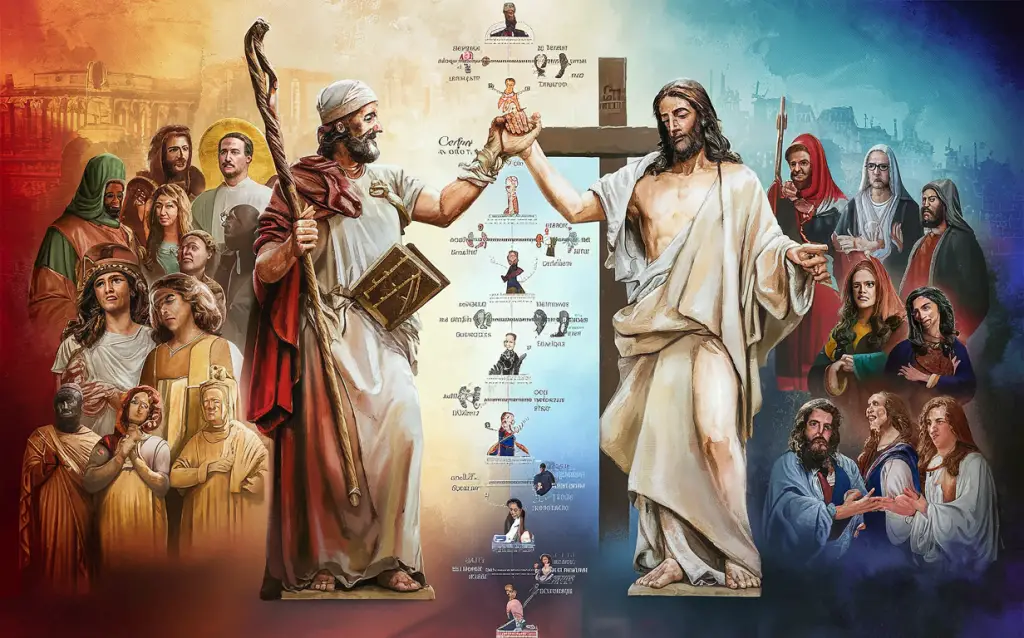Trending
People Who Are Always Late Are More Successful, Says Science
Table of Contents
People Who Are Always Late Are More Successful And Live Longer, Says Science
If you have been late again, and others even criticized you for that, don’t worry much about it. It appears that being late is not such a bad thing after all. Specialists have observed that those people who regularly late have many high-quality personality traits. One of the factors for these characteristics is precisely being late.
Nothing is possible without science, in our every aspect of life science plays important role to it, with health and every new invention in health science nothing can be possible without the work and effort of science.
So according to science those people who do work slow and are late for everything tends to do good with the job or the task so they are more happier and successful.
In this article we will discuss how is it possible according to science late people are more successful and happier without getting stress.
Following are the reasons, late people are more successful and live longer:
1. Late People are more Positive and less Stressful:

you are thinking about a person, aren’t you? Perhaps it is your best friend who’s just not able to get anywhere on time – or perhaps that person is simply you. Regardless this is good news for all people with bad timekeeping skills. Sure, a person may occasionally be late, but there are some tremendous things about being late due to that may just be a redeeming quality.
People who are late feel much less tense, which certainly has benefits for health, but are also able to see at the larger image and think out of the box. All of these elements contribute to achieve greater professional achievement, in addition to prolonging life.
2. Being late makes you more Optimistic:

“Many late people tend to be both optimistic and unrealistic, she said, and this affects their perception of time. They really believe they can go for a run, pick up their clothes at the dry cleaners, buy groceries and drop off the kids at school in an hour”, According to Diana De Lonzor.
De Lonzor says in her book ‘Never be late again’ “They remember that single shining day 10 years ago when they really did all those things in 60 minutes flat, and forget all the other times that everything took much, much longer.”
8 Habits you should stop if you want to be successful
3. This Positivity move you towards Success:

In a case study which is conducted by Metropolitan Life Insurance Company involving salesmen, it was found that “consultants who scored in the top 10 per cent for optimism sold 88 per cent more than those ranked in the most pessimistic 10 per cent”. They performed in more better way because they have got a better outlook.
4. People who are late are more Enthusiastic:

People who are disorganized or frequently late are considered to be enthusiastic. According to the Enneagram Institute, the weaknesses of enthusiastic persons include being ‘over-extended, scattered and undisciplined,‘ however their positive traits include being ‘extroverted, spontaneous, high-spirited and playful’.
5. Their passing of time in reality feels different:

A study done by Jeff Conte, an Associate Psychology Professor at San Diego State University came up with interesting results. The team of researchers conducted an experiment with A type (competitive, impatient) and B type (relaxed, creative) personalities. Late people fall into the B category.
The researchers asked subjects from each group to guess, after one minute, how much time had passed. Members of the A type category answered on average 58 seconds, while B type members answered in 77 seconds. Clearly, these people literally perceive time to be longer that it actually is.
Jeff Conte explained to the Wall Street Journal, “So if you have an 18-second gap… that difference can add up over time”.
6. Multitaskers also perceive time more slowly:

Jeff Conte also examined 181 subway operators in New York City. His findings have been that those subway operators who frequently multitasked also tended to be late more often than their colleagues.
7. They are often completely engaged in their activities, which makes them lose Track:
Think of your favorite friend who continually seems to be late. Is he or she a type of person with interest in a many people, and tries to have engaged in too many activities? As Lifehack.org says, the reason for people being often late is because they’ve been “engrossed in another activity that is fascinating or wildly interesting” which has placed them in “another zone”.
8. Late people don’t make a big deal, as they could see the larger image:
The small details do not seem to both the B type peoples. In such conditions then think because it would be very well for others being late, it’s ok if I’m several minutes late which is probably not.
9 Qualities of Successful Peoples
9. They have more Spontaneity:
Because of the laid- back nature of a B type personality, late people don’t tense a lot about flights, train times, or booking hotels. They “will just throw some items in a suitcase and head out, figuring out where to eat and sleep along the way. There is far more adventure in that.”, according to Lifehack.org.
10. They are also worse with finances:
“People who are late, but genuinely don’t mean to be – the ones who want to be considerate, often live in the moment and find it hard to save for the future”, says Alfie Kohn for the U.S. magazine Psychology Today. Some people “can’t summon the self-control to be on time” meaning that person “probably has trouble getting his or her act together in other ways as well – say, around saving money or saying no to junk food.”
11. They like to beat norms and targets:
People who are late never tend to follow instructions, reason in a linear fashion or fully trust their Google Map estimation. This means that these persons think outside of the box, making them able to deal with issues using unconventional – and often better – methods. According to author De Lonzor, one could be ‘a deadliner’ – someone who is: “subconsciously drawn to the adrenaline rush of the sprint to the finish line”. Or that person could be ‘a producer’ – someone “who gets an ego boost from getting as much done in as little time as possible.”
12. They have lower danger of heart diseases:

A 2003 Research study published in International Journal of Clinical and Health Psychology, observed that A type personalities are thought to have a higher risk of developing coronary diseases. The reason for that the higher stress levels they have experienced. Which means that people who worry less about timekeeping or late people are possibly to avoid stress related diseases.
FAQS
Q. What do you know about the life span of late people?
Ans. According to science late people don’t get stress and worried about the stuff they need to complete so there life span is likely more than the people who take stress and get worried because of their task. Late people tends to live more than the people who take stress.
Q. Do you think being late is the same as lazy?
Ans. No, Being late does not mean lazy, people who are late are not rude and bad.
Q. Why I think that I should not be late?
Ans. I should not be late because people will think that i am not taking care about them or their priorities so some how i should show them that i care about their work and time too by getting to them on tie.
Q. What is the time duration that can not be considered late?
Ans. The time that we considered not to be late are from 5 minutes to 7 minutes nothing more late than this duration.

A blog which focuses on business, Networth, Technology, Entrepreneurship, Self Improvement, Celebrities, Top Lists, Travelling, Health, and lifestyle. A source that provides you with each and every top piece of information about the world. We cover various different topics.
Facts
Journey Through Time: How Many Years Between Moses and Jesus?
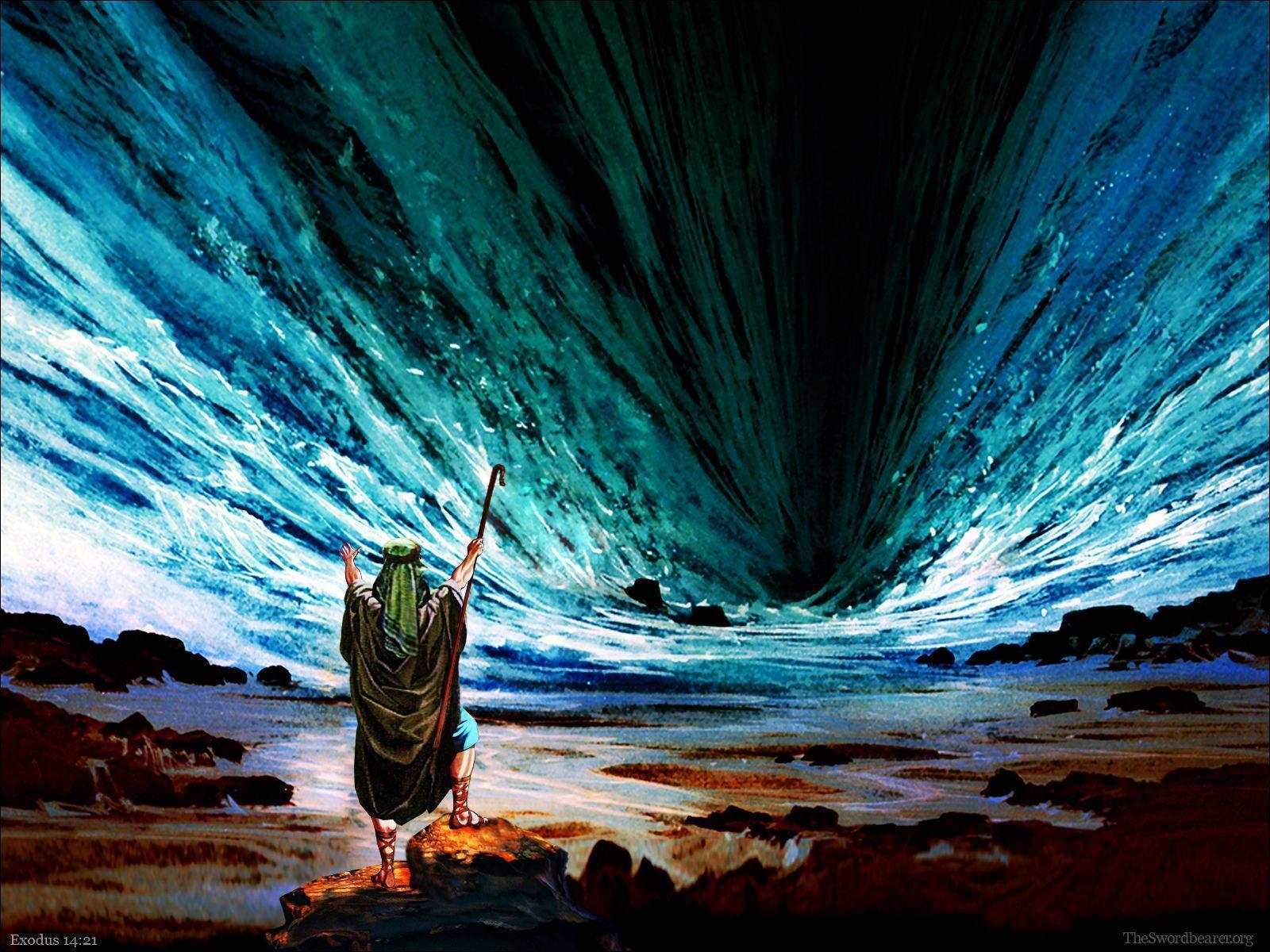
When it comes to Christianity, there are two main figures that many people debate about – when was the start of the church and who is considered to be the Messiah or Christ? These debates can get very heated and even lead to violence!
Many Christians believe that the date for the beginning of the church is around A.D. 30 with Paul as the leader and apostle of the faith. This is called The New Testament Era (or NT). Others say that the birth of the Christian Church happened in Jerusalem during the reign of Emperor Augustus in A.D. 31.
This second group is referred to as The Pre-New Testament Era (or PTN) because they feel that the Bible does not explicitly state when the church started so they go back from what we know about Jesus’ life and ministry to make an assumption about when the church began.
By this reasoning, they conclude that the year A.D. 31 is the most accurate since it is the closest possible year to when someone assumed Jesus to be the Son of God. Some also refer to this era as The Common Era or CE. You may have heard these terms before!
There are several reasons why some scholars put off identifying A.D. 31 as the starting point for the church. One being that they do not fully trust the information we have on Jesus’ birthdate. Another reason is that they think that it is too early to begin counting years in the history of the church.
Table of Contents
How Many Years Between Moses and Jesus
Have you ever wondered how many years separated the biblical figures Moses and Jesus? This intriguing question not only piques the curiosity of religious and historical scholars but also holds immense significance in understanding the development of Judaism and Christianity. In this article, we will delve into the chronological distance between Moses and Jesus and explore its relevance to the biblical narrative.
Understanding the timeline from Moses to Jesus allows us to gain valuable insights into the biblical progression of events. We will explore the transformative moments in Moses’ life, such as the Exodus and the receiving of the Ten Commandments, as well as the era of the Judges and Kings in Israel. Additionally, we will discuss the prophetic insights that connect the Old Testament prophecies to their fulfillment in the New Testament with the arrival of Jesus. Through these explorations, we will calculate and analyze the chronological gap between Moses and Jesus.
To provide a visual aid for readers, we will present a comprehensive timeline table that outlines the major events and years between Moses and Jesus. This timeline table will allow you to grasp the historical context and understand the timeline of key figures and significant moments during this period.
Furthermore, we will traverse the historical gap between Moses and Jesus by examining the social, cultural, and political contexts of their respective times. By understanding the context in which these two influential figures lived, we can better appreciate their teachings and actions and their impact on the world.
In conclusion, exploring the historical timeline between Moses and Jesus not only sheds light on their legacy that has transcended through millennia but also bears implications for the development of Judaism and Christianity. It invites us to reflect on the connections between these two figures and their influence on modern faith. Join us on this journey as we unravel the years between Moses and Jesus and discover their profound significance in the biblical narrative.
The Bible does not specify how many years separate the birth of Moses from that of Jesus. However, by using other events in Scripture as reference points, we are able to make an assumption about how long it took for Christians to recognize his return.
By looking at the time frame between Israel’s entrance into the Promised Land and their first appearance under Joshua’s leadership (around 1400 BCE), we can determine when Christianity began.
This gives us an average of 14 generations or around 350 years between each leader and his successor. This means that if you were born one generation after another up until now, then you would be 1/350th of a person who was 2 ½ decades older than you!
If this concept seems hard to grasp, that is okay! Most people cannot even comprehend what age Abraham, Isaac, and Jacob were either! But believe me when I tell you that everyone else out there your same age as well as people two and three times your own age are very important individuals.
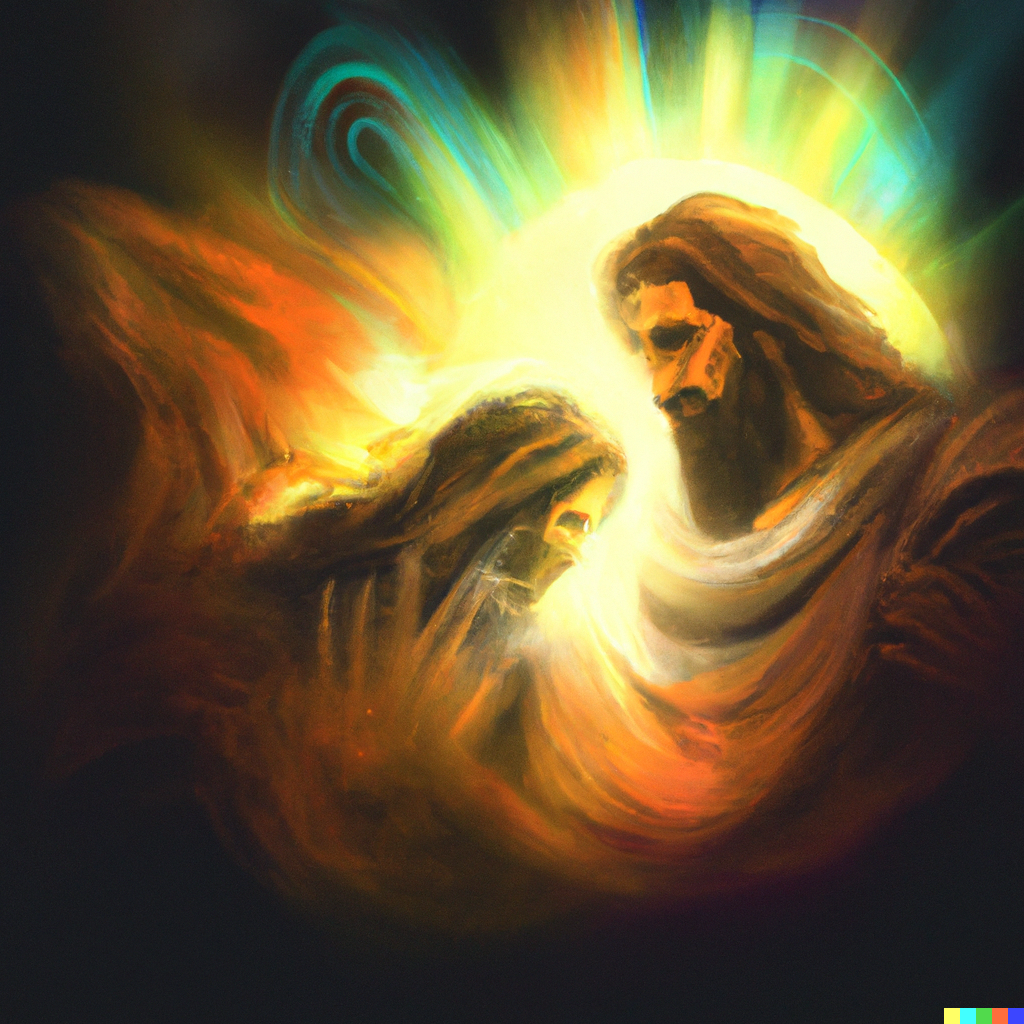
How many generations were there between Moses and Jesus?
The Bible does not specify how many generations exist between someone like Moses and Jesus. Some say that there are at least six, some say eight, some say 10, and others say 20 or more!
We do know one thing about the time frame, though- it was quite a bit longer than two years! When we look back at the history of God’s people, we find that most were in fact raised up during the era of Israel’s monarchy (the period from just after the death of Solomon through the exile of the Babylonians).

Israel reigned for around 30–40 years under King David, Solomon, and his son Rehoboam before they got exiled by the Assyrians in 722 BCE and returned under Hezekiah in 701 CE. This is a total span of some 70–80 years![1]
Many believe that this is why Paul says that “all gospel truth came to its fullest with the ministry of John the Baptist and then Christ” (2 Corinthians 13:10).
I. The Timeline of the Old Testament
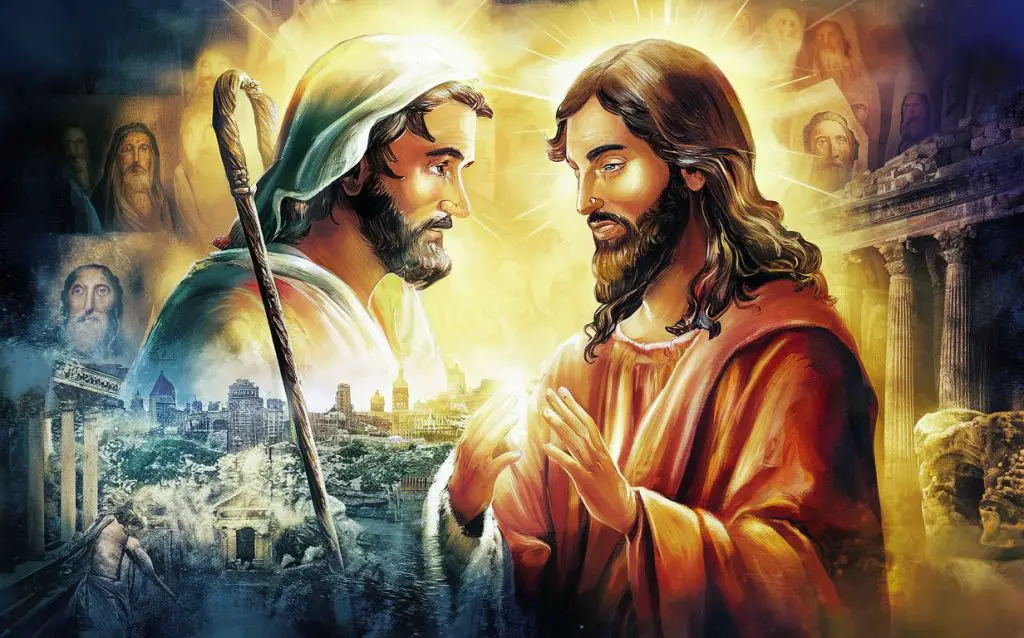
There are many ways to determine how long ago some events took place, or what year something happened. We can use historical documents to tell us when things occurred, we can make an educated guess as to what happened based on known information at that time, or we can estimate how long it would have taken for important events to occur.
By studying the timeline of the old testament, we get different length estimates for when certain events in God’s story took place. Some say the exodus took place around 1400 years ago, while others say 1500-1700 years ago depending on which event they choose to put their date down.
We cannot know exactly when the exodus took place, but by using all of these methods together, we are able to create our own personal estimated timelines for when various events took place.
I. Introduction
In this article, we will be talking about how people calculate the timing of key events in the Bible. You will learn some basic concepts like estimating absolute dates, relative dating, and internal dating.
You will also learn how to apply these concepts to your personal estimated timeline for when specific events in the bible took place.
There are many ways to organize the timeline of the OT, but one that is very popular includes what are called “prophetic timelines.” A prophetic timeline lists events in order from the past (ancient times) to the future (future times).
The list begins with the event that God spoke directly to people through His prophets and moves forward from there. Two main theories exist for why this is done.
One theory says that as humanity experiences more time, we find it harder to believe that someone who has never spoken to us personally would tell us something important about our lives. As we age, we feel that we know less and less people, so we assume that if someone told us something, they must be a liar or mistaken.
This perception can easily carry over into other areas. Since we have not heard direct messages from God, we assume that He does not really exist or that he could not possibly care about us. So when people say things that contradict this assumption, we tend to ignore their message and advice.
By listing all of God’s answers along a sequence of points, we see how much faith He had in Himself and what He knows about human nature. We also learn that He will always speak truthfully to those who ask Him for help.
II. How Many Years Separated Moses and Jesus
The Bible does not make exact predictions, but it gives us clues as to when important events took place. When these are combined with an understanding of how time is calculated in Judaism and Christianity, we can determine that there was a gap of about 14 years between Moses’ death and Jesus’ birth.
This gap corresponds to the fourteen years mentioned in Deuteronomy 34:5–7 where Israel spent during this period. Most scholars agree that this refers to the exile of the Jews from their homeland after the conquest by the Assyrians in 721 BCE. Some believe the verse describes the return trip home or even another exile.
Whatever the case may be, most Christians assume that God sent his only son at some point close to 700 CE, making Jesus around 26-27 years old when he died.
III. The Significance of Moses and Jesus in History
There are many similarities between the life of Jesus and that of Moses, but there is one major difference.
Moses never lived to see his teachings spread across the world nor did he ever establish an organized religion like Christianity has done with the Church and Catholicism.
But what He gave us we can enjoy now!
His teaching can be found throughout history and it still makes sense today. His lessons have flourished and grown as time has passed.
Jesus’s legacy also grows every day as Christians around the globe recognize his importance in their faith.
So how old was Moses when he died? According to tradition, he died at about age 120-125 which gives him 7–8 years more living than Jesus who died at 30.
IV. The Impact of the Old Testament on Christianity
Over the past two thousand years, many scholars have dedicated their lives to studying the Bible to determine what it means for Christians today.
Some focus on historical details, such as determining when certain stories were written or how well preserved some parts are. Others look at the larger themes that run through the books, like what Christian beliefs we can learn from studying the book of Romans.
Yet another group looks beyond the borders of the individual books to see how the different authors’ perspectives relate to each other. For example, reading between the lines reveals something about who these people were and why they wrote as they did.
And while some may disagree over whether one interpretation is better than the others, most agree that the Bible teaches us about God, which makes it an important source of knowledge for our religion.
V. How Mosaic Law Influenced the Life and Teachings of Jesus
The Bible tells us that God gave his law to Moses, and that he carried this law in his heart as he lived his life. This is what allowed him to connect with people from all walks of life and inspire them through his teachings.
Jesus was fully aware of the importance of the Torah (the first five books of the Old Testament). He referenced it frequently throughout his ministry and even made specific comments about some parts. For example, according at least one source,[1] when some Jews were discussing whether it was permissible to eat meat prepared by pagan cultures, or if only food sacrificed to God could be eaten, then Jesus said that no such thing can ever take away consecrated (or sacred) foods like milk and bread.[2]
This shows two things. First, Jesus believed that the Jewish religion was very important because he protected and upheld their traditions.
There are two main theories about how many years exist between the writing of the Old Testament books and the writings of The New Testament. These theories differ slightly in their estimation of the time span, but they both agree that there is a significant gap!
The longer interpretation assumes that the book was written at a specific time period while the shorter one does not include this extended waiting period.
Which theory you believe depends mostly on your preference for timing Scripture. If you like having more time to connect each verse with the next then go with the longer timeline. On the other hand, if you find it difficult to make these connections then use the shorter version.
You also should consider who wrote the book. A popular argument for the short timeline is that since all four gospels were written by eyewitnesses then none of them contain any inaccurate information or exaggerations. This means that although John’s account may be different from someone else’s, his story must be closer to the truth because he knew the person involved.
Understanding the Biblical Timeline: Moses to Jesus
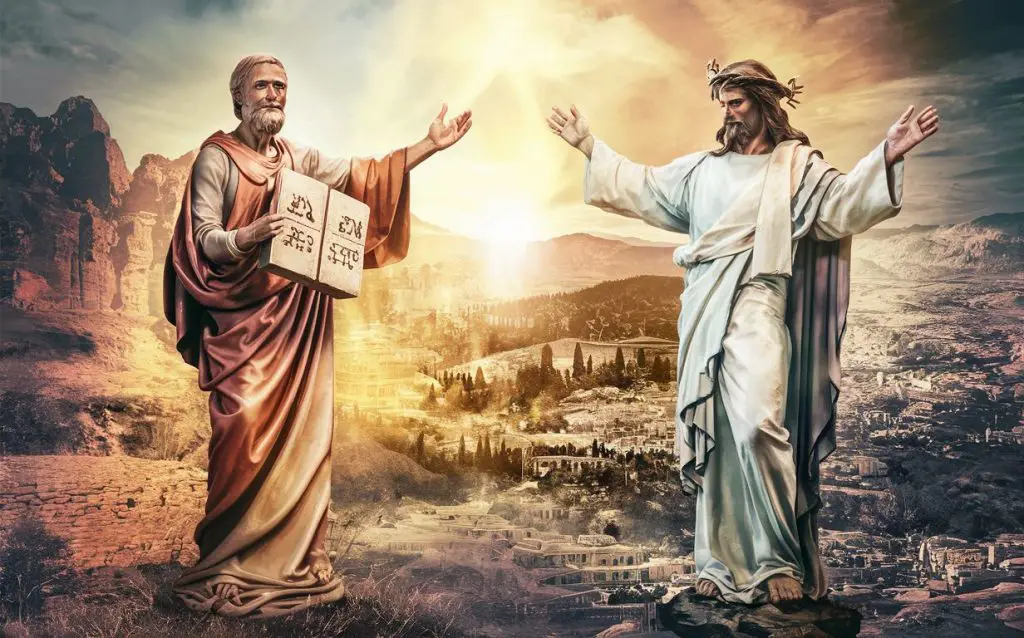
In this section, we will dive into the biblical timeline from Moses to Jesus. This historical span holds great importance for both religious and historical scholars, as it provides insights into the development of Judaism and Christianity. Let’s explore the significant events and periods that bridge the gap between Moses and Jesus.
Moses: The Exodus and the Laws of Israel
Moses, a prominent figure in the Old Testament, played a crucial role in leading the Israelites out of Egypt during the Exodus. This event marked a significant milestone in the biblical narrative, showcasing divine intervention and the establishment of the Laws of Israel. The Ten Commandments, received by Moses on Mount Sinai, provided a moral and legal framework for the Israelites and laid the foundation for their future as a nation.
The Period of Judges and Kings in Israel
Following the Exodus, the Israelites entered a period of transition and governance under judges and later kings. This era was marked by triumphs and challenges, as the Israelites faced external threats, internal conflicts, and the struggle to maintain their faith and obedience to God. Notable figures like Samuel, Saul, and David emerged during this time, shaping the spiritual and political landscape of ancient Israel.
Prophetic Insights: From Prophecy to Fulfillment
The Old Testament is rich with prophecies that foretold the coming of a Messiah, who would fulfill the promises made to the Israelites. These prophecies provided hope and guidance in times of uncertainty. With the arrival of Jesus in the New Testament, these prophecies were fulfilled, solidifying the connection between the Old and New Covenants. Jesus’ life, teachings, and sacrificial death ultimately transformed the religious landscape and paved the way for the development of Christianity.
The Transition from B.C. to A.D.: Calculating the Chronological Gap
The transition from the B.C. era to the A.D. era holds significance in understanding the time period between Moses and Jesus. Calculating the chronological gap involves aligning historical and biblical events to establish a timeline. Scholars and historians use various methods, including references from ancient texts, archaeological findings, and cross-referencing with other historical events, to determine the time span between Moses and Jesus.
Timeline Table Between Moses and Jesus
This section presents a timeline table that outlines the major events and years between Moses and Jesus. The table provides a visual representation of the historical context and the timeline of key figures and events during this period, serving as a helpful reference for readers.
| Events | Years |
|---|---|
| Moses leads the Israelites out of Egypt | 13th century BCE |
| Moses receives the Ten Commandments | 13th century BCE |
| Period of the Judges in Israel | 12th – 11th century BCE |
| Kingdom of Israel established | 11th century BCE |
| Babylonian Exile of the Israelites | 6th century BCE |
| Return of the Israelites from Exile | 5th century BCE |
| Birth of Jesus Christ | 4-6 BCE |
| Ministry and crucifixion of Jesus | 1st century CE |
Traversing the Historical Gap: Moses and Jesus in Context
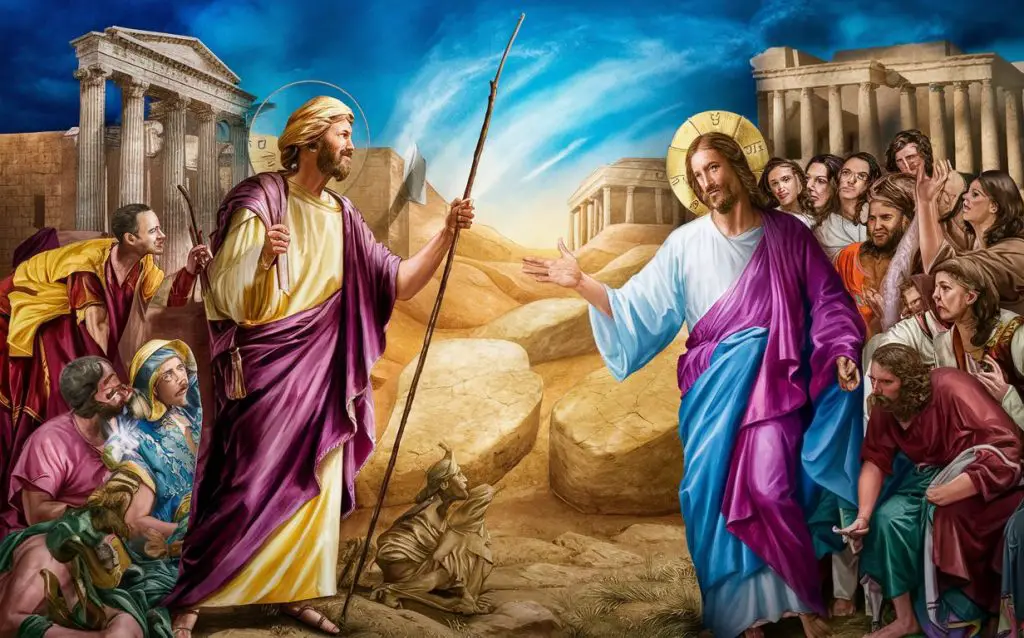
In order to gain a deeper understanding of the historical gap between Moses and Jesus, it is essential to explore the social, cultural, and political contexts of their respective times. By examining the historical background, we can uncover valuable insights into how these two important figures fit into the larger narrative of their eras and the significance of their teachings and actions.
During the time of Moses, the Israelites were enslaved in Egypt before embarking on the Exodus journey to freedom. Moses played a pivotal role in leading his people out of captivity and receiving the divine laws of Israel, including the Ten Commandments. These events shaped the foundation of Judaism and established the Israelites as a distinct nation.
In the period that followed, known as the era of the Judges and Kings, Israel experienced a variety of leadership styles and the establishment of a centralized monarchy. This era marked a significant shift in the governance of the Israelite people and laid the groundwork for the future developments of Jewish religious and political systems.
Prophecy played a critical role in connecting the Old Testament to the New Testament, bridging the gap between Moses and Jesus. Prophets like Isaiah, Micah, and Jeremiah foretold the coming of a Messiah who would fulfill the ancient prophecies and bring salvation to God’s people. The arrival of Jesus marked the fulfillment of these prophecies and initiated a new era in religious history.
By understanding the historical context of Moses and Jesus, we can gain a greater appreciation for the impact they had on their respective societies and religions. Their teachings and actions continue to shape the beliefs and practices of millions of people today, making it crucial to traverse the historical gap between them in order to truly understand their significance.
Conclusion
The legacy of Moses and Jesus has left an indelible mark on humanity, spanning across millennia. Their teachings, actions, and profound influence continue to shape the beliefs and practices of Judaism and Christianity. Understanding the historical timeline between these two iconic figures provides valuable insights into the development of these religions.
The Legacy of Moses and Jesus Across Millennia
Moses, revered as the great prophet and leader, played a pivotal role in the Exodus, the liberation of the Israelites, and the establishment of the laws and commandments that remain foundational to Judaism. His impact can be felt through the profound moral and ethical principles found in the Torah.
Jesus, the central figure of Christianity, brought a message of love, forgiveness, and salvation. His life, teachings, death, and resurrection have become the cornerstone of the Christian faith, shaping its values, rituals, and theology.
Implications of the Historical Timeline for Judaism and Christianity
The historical timeline between Moses and Jesus serves as a bridge, connecting the Old Testament with the New Testament. It demonstrates the continuity and progression of God’s plan and the fulfillment of ancient prophecies through Jesus Christ.
For Judaism, understanding the timeline provides a deeper appreciation for the rich heritage and traditions rooted in the teachings of Moses. It reinforces the significance of adhering to the commandments and the preservation of Jewish identity.
For Christianity, the historical timeline highlights the divine purpose and fulfillment of God’s promises through Jesus. It strengthens the belief in Jesus as the long-awaited Messiah and the embodiment of God’s grace and redemption for humanity.
Reflecting on the Historical Timeline’s Influence on Modern Faith
The understanding of the historical timeline between Moses and Jesus has profound implications for modern faith. It underscores the interconnectedness of Judaism and Christianity, reminding believers of the shared roots and the essential values they hold.
Moreover, reflecting on this historical timeline encourages believers to embrace the continuity and progression of divine revelation. It deepens their understanding of the relationship between the Old Testament and the New Testament, reinforcing the richness and wisdom of the biblical narrative.
In conclusion, the historical journey from Moses to Jesus illuminates the enduring legacy and influence of these two remarkable figures. Their teachings continue to guide and inspire millions of individuals, emphasizing the timeless truths that transcend generations and cultures.
FAQ
How many years were there between Moses and Jesus?
The historical timeline between Moses and Jesus spans several centuries, making the exact number of years challenging to determine. However, it is generally estimated to be around 1,300 to 1,500 years.
What significant events occurred between Moses and Jesus?
Between Moses and Jesus, several significant events took place. These include the Exodus and the receiving of the Ten Commandments by Moses, the era of the Judges and Kings in Israel, and the fulfillment of Old Testament prophecies with the arrival of Jesus.
How is the chronological gap between Moses and Jesus calculated?
The chronological gap between Moses and Jesus is calculated by examining historical records, biblical texts, and other relevant sources. While the exact number of years may vary, historians and scholars use various methods to estimate the timeframe between these two biblical figures.
What is the significance of the historical timeline between Moses and Jesus?
The historical timeline between Moses and Jesus is significant for understanding the development of Judaism and Christianity. It provides insights into the biblical narrative, the teachings, and the actions of these two figures, as well as their enduring impact on faith through the centuries.
How do Moses and Jesus fit into their respective historical contexts?
Moses and Jesus were both central figures in their respective historical contexts. Moses played a vital role in leading the Israelites out of slavery in Egypt and receiving the laws and commandments from God. Jesus, on the other hand, emerged during the time of Roman occupation in Judea and brought about a significant religious and social transformation through his teachings and actions.

A blog which focuses on business, Networth, Technology, Entrepreneurship, Self Improvement, Celebrities, Top Lists, Travelling, Health, and lifestyle. A source that provides you with each and every top piece of information about the world. We cover various different topics.
-

 Facts3 weeks ago
Facts3 weeks agoExperiencing China’s Captivating Women: Enriching Intercultural Exchange
-

 Business3 weeks ago
Business3 weeks agoThe Charm and Convenience of Private Boat Tours and Water Taxis in Venic
-

 News2 weeks ago
News2 weeks agoBlaze ravages apartment complex in Lomita
-

 News3 weeks ago
News3 weeks agoPerspective | Envisioning a New Gaza Conflict
-

 News3 weeks ago
News3 weeks agoOpinion: The overlooked history of high-density housing in Los Angeles
-

 News3 weeks ago
News3 weeks agoExplorers in Lake Michigan Discover 1886 Shipwreck Using Newspaper Clippings as Clues
-

 News2 weeks ago
News2 weeks agoFamily concerned for well-being of U.S. hostage Ryan Corbett in Taliban prison following disturbing phone call
-

 News2 weeks ago
News2 weeks agoChina’s Communication Satellite is Orbiting the Moon
















